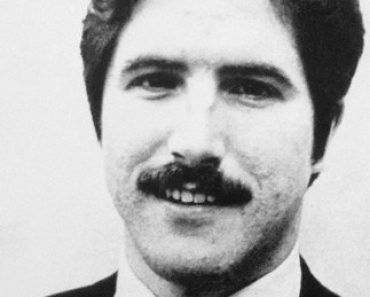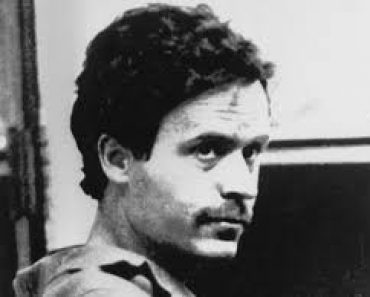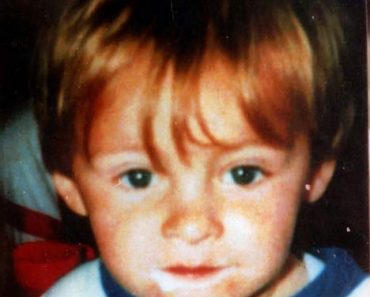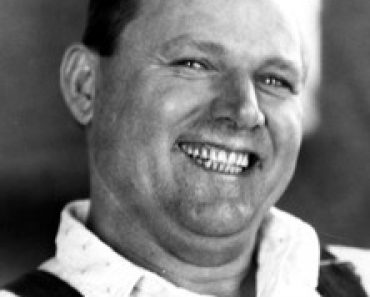Theresa Knorr | Torture Slayings

Theresa Knorr
Born: March 14, 1946
Mother of Murder
An American Serial Murderer
Crime Spree: July 16, 1984 and June 21, 1985
Incarcerated: State Prison for Women in Chow Chilla, California
Eligible for parole in 2027
Theresa Jimmie Knorr was born on March 12, 1946. She was known for severely abusing and murdering two of her own children while using he other children to cover up her crimes. She married Clifford Clyde Sanders at the young of age of 16 and had their first child. While pregnant with their second child, Theresa ended an argument with her husband by shooting him dead. She was tried and found not guilty. She then delivered her second child and called the little girl Sheila. Shelia would become one of two children that would never escape the wrath of the demon they called mother.
The Burning Corpse
On the morning of July 17, 1984, 45-year-old Maybel Harrison was driving on California’s Highway 89 when she noticed a bright light illuminating the woods. Concerned that a fire had broken out, Maybel decided to investigate.
From her vantage point on the interstate, Maybel wasn’t sure what she was looking at, but as she made her way down the rocky slope to get a closer look, a permeating stench stopped her. Alarmed, she ran back up the incline and flagged down a truck.
Robert Eden stopped his truck when he saw Maybel waving her arms. When she told him there was an unusual fire burning at the bottom of the hill, Eden grabbed his fire extinguisher and the two headed toward the source.
After Eden doused the flames and the smoke began to clear, he and Maybel discovered what appeared to be a charred human corpse. As soon as the reality of the situation hit him, Eden ran back to his truck and reported the grisly discovery to authorities on his CB radio.
Jane Doe #4873/84
Emergency services personnel were already surrounding the area by the time Tahoe City Detectives Russell Potts and Larry Addoms arrived on the scene. After looking over the gruesome sight, Potts requested that criminologist Michael Saggs and Placer County Sheriff Donald J. Nunes be brought in. Within an hour, the four men were taking soil samples and photographing the area.
The body was badly burned and the lower portion of the victim’s left leg was detached and lying next to the body. The left arm was propped up on its elbow and the right arm was extended at the victim’s side. The only part of the body not burned was the left side of the victim’s face. It was obvious that the victim was female: her breasts, although severely charred, remained visible.
Investigators collected more than 30 pieces of evidence, which they found on and around the body. Among the items cataloged, a green Pepsodent toothbrush, a pair of Gloria Vanderbilt jeans, a yellow and black scarf, an underwire size 32 C bra from J.C. Penney’s, a black onyx bracelet, disposable diapers, a pair of hoop earrings and several miscellaneous articles of clothing. After finishing up the crime scene, investigators dubbed the body Jane Doe #4873/84 and sent her to the Placer County Morgue.
Less than two hours later, forensic pathologist Dr. A. V. Cunha conducted the autopsy. The victim was between 18 and 22 years old, 5 feet 3 inches tall and weighing approximately 115 pounds. The body showed signs of abuse, and there were two puncture wounds discovered on the victim’s back. The discovery of an ovarian tumor indicated that Jane Doe had suffered a severe beating at some time prior to her death.
Her physical injuries were life threatening, but the immediate cause of death was smoke inhalation. Following the autopsy, Jane Doe’s fingers were removed and sent to Sacramento for prints. Her maxilla and mandible were also removed in case dental records surfaced. Investigators had few clues to go on and very little hope of discovering the identity of Jane Doe #4873/84.
The Story of Theresa Knorr
According to the 1995 book Mother’s Day, by Dennis McDougal, Theresa Jimmie Francine Cross was born on March 12, 1946. Her father, Jim Cross, was an assistant cheese maker at Sacramento’s Golden State Dairy, and her mother, Swannie Gay Cross, worked at a local lumber company. Theresa had an older sister, Rosemary, born in 1944 and two older step-siblings, William and Clara Tapp. The stepchildren were from Swannie’s first marriage, which unexpectedly ended with the death of her husband in 1939.
The Cross family prospered over the years and by the early 1950’s they were able to move out of their small Sacramento bungalow and purchase a large house in Rio Linda, California. Nonetheless, their happiness was short lived, and sometime during the late 1950’s, Jim Cross fell ill with Parkinson’s disease. He could no longer work and was forced to quit his job. Following his diagnosis, Jim fell into a deep depression and often took his anger out on his children.
According to friends of the family, Theresa Knorr was a loner and jealous of her sister Rosemary. If they weren’t fighting over a neighborhood boy, they were competing for their mother’s attention. Theresa was especially fond of her mother, and outsiders felt that Swannie favored Theresa over Rosemary. In retrospect, the afternoon of March 2, 1961, probably affected Theresa more than anyone could have imagined. Theresa was escorting her mother to a local store that day when her mother suddenly collapsed. As Theresa held the woman in her arms, Swannie breathed her last breath and died. Her cause of death was congestive heart failure and on March 6, 1961, Swannie Cross was buried at Sunset Lawn Cemetery.
A Deep Depression
Following the death of her mother, Theresa Knorr fell into a deep depression, from which she never seemed to fully recover. Without Swannie’s income, Jim Cross could no longer afford to keep the family home and was forced to sell it. Bit by bit, every piece of security Theresa had known was taken away from her. With her life in disarray, Theresa latched onto the first man that walked into her life.
Clifford Clyde Sanders was five years older than Theresa when the two first met at a mutual friend’s house. Within weeks, the young couple was in love and discussing marriage. Whether Theresa actually loved Clifford or simply wanted security in her life is anyone’s guess. Regardless, on September 29, 1962, Theresa Jimmie Cross became Theresa Jimmie Sanders. Shortly after the wedding, Theresa dropped out of junior high school and the couple moved into a one-bedroom apartment in the North Highlands district of California.
It did not take long for the marriage to start going down hill. Theresa was very possessive of Clifford and kept him on a short leash. On July 16, 1963, Theresa gave birth to their first child, Howard Clyde Sanders. Things seemed to settle down for a while, but eventually Theresa reverted back to her old ways. Howard was unhappy in the marriage and had it not been for Theresa’s second pregnancy in the spring of 1964, he probably would have left her. Their one bedroom apartment was too small for another child and the growing family moved into a small white house just outside of Sacramento.
The Boiling Point
While Theresa Knorr and Clifford’s marriage had its ups and downs, tempers came to a boiling point on June 22, 1964. Rather than spend the day with her and the baby, Clifford went out drinking with his friends. Later that evening, he strolled in drunk and Theresa boiled over. She berated him for neglecting his family and wasting their much-needed money on booze.
Clifford was in no mood to argue and ended her tirade with a single punch to the face. Theresa went to the police station and filed assault-and-battery charges against him, but when it came time to arrest him, she refused to sign the papers and the charges were dropped.
According to the 1995 book Whatever Mother Says by Wensley Clarkson, Clifford had a huge argument with Theresa on his birthday, July 5, 1964. Theresa accused him of infidelity and he decided he’d had enough. The following day, Clifford packed his bags and told Theresa that he was leaving her. Unfortunately, he never made it out the door. Theresa went into a rage, grabbed a rifle and fired. Clifford stumbled backwards and fell to the floor dead.
Galt Police Chief Walter Froehlich was one of the first officers on the scene.
“I grabbed a gun to make him keep from hitting me and it went off,” Theresa said.
Clifford’s body was lying facedown in the doorway of the kitchen and on the opposite end of the room Froehlich found the rifle leaning against a wall. Froehlich arrested Theresa and transported her to the Sacramento County Jail. Baby Howard was then taken to stay with one of Theresa’s relatives.
An 18 Year Old Killer
The headline on the July 7, 1964, Sacramento Bee daily newspaper announced MURDER CHARGE IS DUE IN GALT DEATH. The first paragraph read: “Deputy District Attorney Donald Dorfman said he planned to file a murder charge today against 18-year-old Mrs. Theresa Sanders of Galt in the deer rifle slaying of her husband. Clifford Sanders, 23, was slain yesterday morning in the couple’s small Galt home. Investigators reported the bullet apparently grazed off his left wrist and lodged in his heart.”
On August 4, 1964, Theresa entered a plea of innocent by reason of self-defense in a Sacramento courtroom. Her trial was scheduled to begin three weeks later in Judge Charles W. Johnson’s courtroom.
Unexpected Outcome
Deputy District Attorney Donald Dorfman wanted a first-degree murder conviction and on August 30, 1964, he began his opening statements to the jury. Dorfman accused Theresa of murdering her husband in cold blood and insisted she had concocted the allegations of self-defense in order to spare herself a prison sentence. The murder, in Dorfman’s opinion, was committed because of Theresa’s suspicions that her husband was committing adultery. Afterwards, Theresa’s attorney, Robert Zarick, argued that Theresa acted out of self-defense and was only protecting herself and her unborn child.
One of the first witnesses called to the stand was Dr. Arthur Wallace, the man who performed Clifford Sanders’ autopsy. Wallace testified that there were no powder burns on the body and blood tests revealed no presence of alcohol. He described the injuries to Sanders body and testified that the .30-30 caliber slug had passed through Sanders wrist before embedding itself in his heart. “It was my assumption, and I believe this is very correct, that the deceased apparently had his hand in some position in front of his chest,” Wallace said. “The fact that it lodged within the soft tissues of the heart shows that its momentum was considerably slowed when it struck the chest.” Following Wallace’s testimony, a criminologist testified that the .30-30 caliber rifle found at the scene was the murder weapon.
Police Chief Walter Froehlich described the crime scene and events leading up to Theresa’s arrest. Rapping up the prosecution’s side, Dorfman questioned several of Sanders’ relatives in an effort to show the victim was not a violent or abusive person.
article continued below
article continued below
A Loss To Regret
Surprisingly, Theresa briefly took the stand and testified on her own behalf. She told the jury a tearful story of physical abuse and claimed her husband was a violent alcoholic. Mental health counselor Dr. Leroy Wolter described Theresa as anxious, remorseful and frightened. It was his opinion that she acted in self-defense and was not capable of committing a cold-blooded and calculated crime. Friends and relatives enforced Wolter’s testimony and described Theresa as a sweet young girl, who did not know what she was getting into when she married Sanders.
Closing arguments began on September 21, 1964. Dorfman repeated his opening statements and accused Theresa of murdering her husband out of jealousy. “This is clearly premeditated first-degree murder,” he told the jury. “Not every murderer can look like the witch in ‘Snow White.’ She is 18 and pregnant, but that doesn’t overcome the fact she maliciously shot and killed her husband without provocation.”
On September 22, after deliberating for one hour and 45 minutes, the jury found Theresa Jimmie Francine Sanders not guilty. Dorfman was dumbstruck by the verdict. Whether he realized it at the time or not, the loss would eventually come back to haunt him.
The Birth of Sheila
After earning her acquittal, Theresa Knorr regained custody of her son Howard and moved in with family friends. She was four months pregnant. Her marriage to Clifford may not have been happy, but at least it provided her with a sense of belonging. Now, at just 18, she was alone and again desperately seeking stability.
To cope, Theresa turned to alcohol and began drowning her sorrows at a local American Legion Hall. It was there that she met Estelle Lee Thornsberry, an Army veteran who had suffered a debilitating blow two years earlier when a swimming accident left him a quadriplegic. Nonetheless, Thornsberry’s disability didn’t seem to bother Theresa and the two began dating.
On March 13, 1965, Theresa gave birth to Sheila Gay Sanders. Even though the child was not his, Thornsberry doted on her and treated her as his own. Deeply in love with Theresa, he suggested they all move in together and live as a family. Theresa agreed and a few weeks later they rented out a small apartment.
In the beginning, Thornsberry enjoyed the living arraignments, but his feelings began to change when Theresa started treating him as a babysitter, rather than a love interest. With the relationship already rocky, things came to an end a few months later when Thornsberry discovered Theresa was cheating on him with his best friend. Following a heated argument, Theresa packed her belongings, along with most of Thornsberry’s, and moved in with friends.
Enter Robert Knorr
Shortly after her break up with Estelle Thornsberry, Theresa set her sights on Robert Knorr, a private in the Marine Corps. The two began dating and within a few months Theresa was pregnant and they began discussing marriage. In February 1966, Knorr was shipped off to Vietnam. Shortly after his arrival, Knorr was on patrol when a stray bullet struck him in the shoulder. The injury was not serious, but frightening just the same.
After a brief stay in a field hospital, he was back on his feet and patrolling the jungle again. But, just weeks later, Knorr was again shot. This time the bullet hit him in the side, but barely penetrated the skin, earning him another brief stay in the hospital.
His luck was running out though. A few months later, while walking across a bridge in the middle of nowhere, it suddenly blew up. Shrapnel from the explosion ripped through his arms and legs and the explosion threw him back to the ground. Luckily for Knorr, there would be no more close calls. His latest injuries earned him a trip stateside and he spent several months recovering at Oakland Naval Hospital.
By June 1966, Theresa Knorr was seven months pregnant and eager to settle down with Knorr. On July 9, 1966, the young couple drove to Nevada and exchanged vows in front of a local judge. It was Robert’s first marriage and Theresa’s second. Both were eager to settle into their new roles and rented a small apartment in Sacramento.
Two months later, on September 27, 1966, Theresa gave birth to her third child, a girl. Theresa named the child Suesan Marline Knorr. Less than three months later, Theresa was pregnant again and on September 15, 1967, she bore Robert his first son, William Robert Knorr. A second son, Theresa’s fifth child, was born on December 31, 1968. Keeping her older half-brother in mind, Theresa named the boy Robert Wallace Knorr.
The Torture Begins
Robert continued to serve in the military, but his diminished abilities left him few options and he was forced to work as a burial escort. The job wasn’t without its perks, but it often required Robert to leave his family on a moment’s notice and travel halfway around the country. Theresa disliked Robert’s new job and regularly voiced her opposition.
Just as she did with Clifford, she began accusing him of infidelity. Tempers often flared and Theresa took her anger out on the children. According to Dennis McDougal, author of the book Mother’s Day, Theresa would often punish them by forcing them to sit on the floor without moving. If they budged an inch or moved an eye, she would become angry and slap them. Whenever that didn’t work, she would lock them in a closet or force-feed them until they were ready to collapse.
By June 1969, Robert could no longer take Theresa’s allegations and sudden outbursts. Leaving his children behind, he packed up what few belongings he had and moved out. Theresa retaliated by filing for divorce on grounds of extreme cruelty, but a few weeks later they reconciled and she dismissed her charges.
Regardless, as much as Robert wanted to make the marriage work, it was far too late. One year later Theresa again filed for divorce. In an ironic twist, Judge Charles W. Johnson, the same judge that presided over Theresa’s murder trial, granted the couple a divorce on June 3, 1970.
Two months later, Theresa gave birth to her sixth and final child and named the girl after herself, Theresa Marie Knorr. Following the divorce, Robert tried to visit his children, but Theresa did not want anything to do with him and repeatedly denied him the right to see them. Robert eventually gave up and remarried.
Theresa Knorr
Theresa didn’t stay single for long and soon began dating a railway worker named Ronald Pulliam. In 1971 they married and shortly after purchased a house in east Sacramento. To outsiders they seemed like a perfect family but, before long, history began to repeat itself and Theresa began treating Ronald as a possession rather than a partner.
Just as she did with Estelle Thornsberry, Theresa began leaving her children at home with Ronald while she went out and partied. Eventually, she stopped coming home all together. Ronald was convinced that she was seeing another man and filed for divorce. On September 27, 1972, with Judge Charles W. Johnson again presiding, the divorce was granted.
With her newfound freedom, Theresa spent the majority of her time drinking at the American Legion Hall in Rio Linda. It was there that she met 59-year-old Chet Harris, a copy desk editor at the Sacramento Union newspaper. The two seemed to hit it off well and were married on August 23, 1976, just three days after their first meeting.
It was immediately obvious to Theresa that she had made yet another bad mistake. Shortly after moving in with her new husband, she discovered that one of his favorite hobbies was taking photographs of nude women. In fact, his bedroom walls were covered with them. He wanted Theresa Knorr to pose for him, but she refused.
While Theresa may have hated her new husband, her daughter Suesan grew close to him and the two would often spend hours together working on jigsaw puzzles and discussing mythology. The relationship between her daughter and Harris angered Theresa. While she wasn’t particularly close to any of her children, she didn’t feel that anyone else should step in and try to assume her role.
On November 22, 1976, two months after the marriage began, Theresa filed for divorce. With Judge Charles Johnson yet again presiding, the paperwork became final on December 17, 1976.
It was one of Johnson’s last court appearances and he retired two months later.
The Edge of Insanity
Following her latest divorce, Theresa’s children noticed a remarkable change in her behavior. She started to drink even more and began putting on a great deal of weight. Her attitude became worse with each day and the abuse toward her children severely increased.
“When we were kids, my mom beat the shit out of us a lot,” her daughter Terry (Theresa) told Dennis McDougal years later. “If we hugged our mom too much, it was like, who were we trying to convince? That we loved her or she loved us? On the other hand, if we didn’t hug and kiss and tell her we loved her, then we didn’t love her and we were evil children. We were demon seeds that had been given to her by Bob Knorr.”
Terry’s older brothers William and Robert agreed. “Sometime around when I turned 10 she started becoming abusive, real short-tempered,” William said. “She stopped going out, seeing friends at all, on any level. She got rid of the telephone because she didn’t want any people calling. We weren’t allowed to have anybody inside the house.”
“When I was growing up, I hated The Brady Bunch because I knew that nobody lived like that,” said Robert. “I knew that because I knew what my family life was like. Nothing could be more different from the truth than that bullshit TV show. I grew up in an insane asylum basically, but what’s worse is we didn’t know it was an insane asylum.”
The more Theresa drank, the crueler she became. On one occasion she even threw steak knives at her children. During another of her binges, she grabbed Terry by the arm and held a .22-caliber pistol to the girl’s head. For months afterward her daughter suffered terrifying nightmares.
As if the mental torture was not enough, Theresa started beating the children on a regular basis, forcing them to take turns holding each other down while she administered the blows from above.
The Witch
Theresa Knorr eventually got the idea in her head that Chester Harris had turned her daughter Suesan into a witch. It’s not known where the wild idea first came from, but Suesan began taking advantage of it and would use it against her mother. She would regularly say that Harris was going to initiate her into his cult by deflowering her in the name of Satan.
The stories did not serve to spare Suesan any abuse and she began suffering the worst of Theresa’s blows. Eventually Suesan ran away from home. Her freedom was short-lived and she was eventually picked up by a truancy officer and placed in Sutter Memorial Psychiatric Ward.
During her stay at the hospital Suesan told counselors about her family life and regular beatings. When confronted with her daughter’s allegations, Theresa claimed her daughter was lying and suffered from mental problems. No one questioned her answer and Suesan was turned over to her mother.
Once back home, Suesan received one of the most severe beatings of her life. Theresa donned a pair of leather gloves and struck her daughter repeatedly. Afterwards, she forced the other children to join in.
“We had to pass gloves from one to the other and hit Suesan in the stomach for what she did to the family by running away and everything,” Robert recalled to Dennis McDougal years later. “And I had to hit her twice because I didn’t hit her hard enough the first time.”
Theresa didn’t want her daughter running away again, so at night she would handcuff Suesan to the bed and force the other children to take turns keeping watch over her. School was out of the question and Theresa did not permit her daughter to attend. Eventually, Theresa’s torment broke Suesan’s will and she was allowed to sleep alone and unshackled. Apparently, the fear of another serious beating kept her in line.
Bartering Freedoms
In 1982, Theresa got the wild notion that Suesan was putting spells on her, forcing her to gain weight. Suesan denied the allegations, but her protests fell on deaf ears and Theresa flew into a violent rage. Before any of the other children knew what was happening, they heard a single shot ring out. Suesan began gasping and fell to the floor. Blood poured out of her chest and she was writhing in pain. Theresa had shot her own daughter with the .22-caliber pistol she had once used to threaten Terry.
After a brief pause, Theresa ordered the other children to carry their injured sister to the bathroom and place her in the tub. Theresa did not want the police involved, so an ambulance was out of the question. The bullet had not passed through Suesan’s body, but it was too deep to remove from the open wound. Theresa decided to leave it in and patched her daughter up with gauze and bandages.
For the next month, Suesan’s sisters looked after her. Terry and Sheila took turns feeding and bathing her and eventually Suesan recovered enough to rejoin the family.
In November 1983, Theresa and her children moved into an apartment in north Sacramento. Things were back to normal for a while, but then in July 1984, Theresa got into a heated argument with Suesan and stabbed her daughter in the back with a pair of scissors. The injuries were not life threatening, but serious nonetheless.
Suesan was getting tired of the daily abuse and a few weeks later she asked for permission to move out. Surprisingly, Theresa agreed. But there was one stipulation: Theresa wanted to remove the bullet that remained lodged in her daughter’s back.
Suesan reluctantly agreed and a few days later the surgery began.
The Murder of Suesan
Theresa started the operation by giving her daughter a handful of Mellaril capsules and a quart of hard liquor. The concoction worked and before long Suesan was completely unconscious. Theresa then retrieved an X-Acto knife from the medicine cabinet and ordered 15-year-old Robert to cut into his sister’s back and retrieve the bullet.
Theresa barked orders from overhead as he made the incision. Before long, he had cut through several layers of skin and muscle tissue. Using his fingers, Robert searched around inside the wound until he finally located and removed the bullet.
The next day Suesan woke up in horrible pain. Theresa gave her antibiotics and ibuprofen, but the medicines didn’t seem to have an effect and she kept getting worse. After a few days, her eyes turned yellow and she could no longer control her bowels. At one point, Terry noticed black marks on Suesan’s back, which she later concluded were from internal bleeding, a result of Theresa’s last beating.
On July 16, 1984, Theresa duct taped Suesan’s mouth shut and bound her arms and legs. Afterwards she packed all of the girl’s belongings into trash bags and ordered Bill and Robert to put Suesan in the car. They drove south on Highway 89 and eventually pulled off the road by Square Creek Bridge.
Bill and Robert were then ordered to take Suesan out of the car and carry her down to the creek bank. Theresa brought down the garbage bags herself and then doused everything, including Suesan, in gasoline and struck a match.
Everyone made their way back to the car and no one looked back. Things around the Knorr house remained quiet and sullen during the weeks following Suesan’s death, but eventually everything went back to normal.
Jane Doe #6607-85
During late spring 1985, Theresa decided to supplement her small state-assisted income by having 20-year-old daughter Sheila work the streets as a prostitute. Sheila was horrified at her mothers plan, but she was also not going to disobey.
Before long, Sheila was bringing home hundreds of dollars a day and Theresa seemed almost proud of her daughter. She eased up on the daily beatings and Sheila was allowed to come and go as she pleased. In a twisted sense, becoming a prostitute had benefited Sheila.
In May 1985, Sheila’s freedom was brought to a sudden end. Theresa suspected that her daughter was pregnant and also accused her of having a venereal disease, which Theresa claimed to have gotten by using a toilet.
Sheila was beaten black and blue before being hog-tied and locked in a tiny closet next to the bathroom. It was excruciatingly hot within the closet, but Theresa left strict orders for the other children: the door was to be kept closed at all times and they were not permitted to give her any food or water.
“She wanted Sheila to confess,” Terry said years later. “That was mother’s way. Beat them until they confess.”
Sheila did eventually confess, but Theresa accused her of lying and the punishment continued. On June 21, 1985, the third day of Sheila’s incarceration, the family heard a loud thump coming from the closet. It was the last sound they heard from Sheila. Three days later when they opened the door, they discovered Sheila’s decomposing body curled up in a fetal position. Apparently, she had tried to climb up some small shelves in the closet, but they would not hold her weight and she came crashing down.
The Girl In The Cardboard Coffin
Theresa grabbed an old cardboard box and filled it with blankets and pillows. She ordered her two sons to place Sheila’s remains inside and carry it out to the car. Everyone did as they were told and eventually they were driving up Interstate 80, toward the Truckee Airport. Along the way, Theresa spotted a small field and decided to pull off the road. She ordered the boys to unload their sister’s cardboard casket and toss it in the weeds.
A few hours after the box was dropped off, Elmer Barber was making his usual rounds at the Martis Creek Campground and stumbled upon the homemade casket. His curiosity got the best of him and he lifted the flaps of the box open. What he saw inside would prove to haunt him for the rest of his life.
Elmer quickly notified the Nevada County Sheriff’s Department and within hours the area was swarming with investigators. Nonetheless, they were unable to make a positive identification and there were very few clues to work with. The victim was dubbed Jane Doe #6607-85 and her cause of death was listed as undetermined.
Theresa was extremely paranoid after Sheila ‘s death and became concerned that the closet contained evidence, which might someday implicate her in her daughter’s death. So, on September 29, 1986, Theresa packed up all of the family’s belongings and ordered Terry to set the house on fire.
Using charcoal lighter fluid, Terry doused the floors and struck a match before climbing out a side window. Regardless of Theresa’s intent, neighbors immediately noticed the fire and the local fire department was dispatched to the scene. There was little damage done to the home and investigators had no doubt that the blaze had been started deliberately.
Last Stop
Theresa’s children were all but grown by the time she went into hiding. Howard, 26, wanted nothing more to do with the family and his brother, 24-year-old William, moved in with a girlfriend. Terry, Theresa’s namesake, also left her mother. She was only 16 at the time, but by using Sheila’s identification she was able to pass herself off as 21. Theresa’s only remaining child, 19-year-old Robert Wallace Knorr was the only one who stayed by her side and eventually the two moved to Las Vegas.
Things were going well in the beginning, but on November 7, 1991, Robert made a dreadful mistake. Desperate for money, he walked into Red’s Place, a bar on North Nellis Boulevard in Las Vegas, and pulled out a gun. The details remain sketchy, but in the end the bartender, Robert Ward, was left dead at the foot of the bar. Investigators arrested Robert for the murder and he was later sentenced to 16 years in jail. Theresa was nervous about all the attention, and a few weeks later she moved to Salt Lake City, Utah.
In 1992, Terry, who had since married, was watching an episode of America’s Most Wanted. While none of the cases related to her or her family, they inspired her to do the right thing and she contacted Nevada authorities.
Police sergeant Ron Perea of the Nevada County, California, Sheriff’s Office received the call. Terry told him that years earlier, her mother and two brothers killed her sister by dousing her with gasoline and setting her afire. The next year, she told them, they killed her other sister and dumped her body in the mountains.
Perea was intrigued by the young woman’s unbelievable tale and decided to interview her in person. The following day, Perea met with Terry and interviewed her for several hours. He took his notes to the district attorney’s office and a task force was assembled to check out the story.
Investigators soon discovered the Jane Doe reports and everything started to fall in place.
Theresa Knorr
On November 4, 1993, investigators filed felony complaints against Theresa and two of her sons. William was found in a Sacramento suburb, where he worked at a warehouse and lived in a peaceful neighborhood. Investigators soon learned of Robert’s previous arrest and found him in a Nevada County jail.
Neither of the boys was interested in talking with investigators, but both eventually relented and confessed to their involvement in both of their sister’s deaths.
Five days later, California investigators received a call from Salt Lake City authorities, telling them that Theresa had been traced by a driver’s license application. She had also been arrested just five days earlier for drunk driving. Sergeant John Fitzgerald of the Placer County Sheriff’s Office flew to Salt Lake and headed for the address listed on Theresa’s license application. Just before nightfall, he knocked on the door. Surprisingly, Theresa Knorr answered without hesitation and was promptly arrested. Investigators had acted not a moment too soon. Theresa was aware of the investigation and was in the process of packing her belongings. Back at the police station she refused to cooperate and requested a lawyer.
Epilogue
Theresa was charged in the torture slayings of her two daughters and arraigned in a Salt Lake City courtroom on November 15, 1993. According to articles in the Sacramento Bee, she was extradited to Placer County the following month, arraigned before Superior Court Judge J. Richard Couzens and charged with two counts of murder, two counts of conspiracy to commit murder, and two special circumstances—multiple murder and murder by torture—charges, which could result in a death sentence. Theresa pleaded not guilty and was remanded to the Sacramento County Jail.
That same day, Judge Couzens ordered William Robert Knorr prosecuted as an adult. Robert eventually struck a deal with prosecutors and agreed to testify against Theresa in exchange for a lighter sentence. One month later, all charges against him, except a single count of conspiracy regarding Sheila’s death, were dropped.
When Theresa Knorr learned of the deal Robert made with the district attorney’s office, she decided she did not want to take her chances with a death sentence and offered to plead guilty in exchange for her life. District Attorney John O’Mara agreed and on October 17, 1995, Theresa changed her plea to guilty. During sentencing, Judge William R. Ridgeway characterized Theresa’s crimes as “callousness beyond belief,” and sentenced her to two consecutive life sentences. Theresa Knorr will be eligible for parole in 2027. If she lives to see it, she will be 80 years old.
Robert, who was still serving out his murder charge in Nevada, was eventually sentenced to three years in state prison. The court ordered the sentence run concurrently with his 1991 murder sentence. William was placed on probation for his role in the murders and ordered to undergo therapy.
Source: David Lohr | CrimeLibrary |
This site contains affiliate links. We may, at no cost to you, receive a commission for purchases made through these links
WickedWe Suggests:

































































